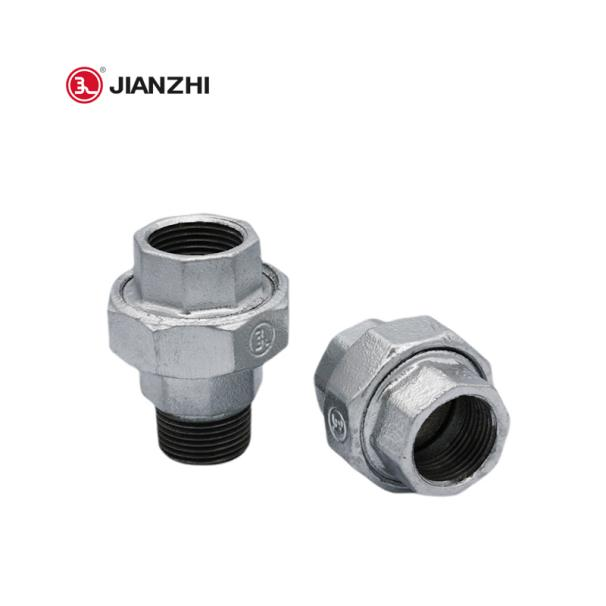Dec. 09, 2024
The definition of an internally threaded pipe is to machine a line or several spiral grooves on the inner wall of the pipe, which appear as rectangular grooves in cross-section. Internally threaded tubes are also known as dry steaming tubes, internally ribbed tubes, or internally finned tubes.

Common materials include malleable cast iron and stainless steel
How internal threads are formed: Most threads are processed by mechanical machining. When tapping internal threads, it is necessary to first drill a bottom hole of appropriate size on the workpiece and chamfer it. Then, the tap is inserted into the hole, manually or using a machine tool for threading. At the same time, after each rotation, the tap is reversed to prevent jamming.
● During the process of heating and evaporation inside the pipe, as the heat load increases, the previously nucleate boiling condition changes to film boiling due to the inability of water to replenish the wall in time. At this time, the wall comes into contact with the steam film, and the heat release coefficient drops sharply. The pipe cannot be cooled well, causing the wall temperature of the pipe to rise sharply, resulting in overheating and burning of the heating surface. The key to preventing the deterioration of film boiling heat transfer is to timely replenish the water in the annular water film on the inner wall of the tube, and the water source is the water droplets in the central steam flow. To make the water droplets in the central steam flow deposit on the water film, centrifugal force is used to make the water droplets reach the pipe wall under low flow velocity.
● When the working fluid flows inside the internally threaded pipe, it rotates under the action of the spiral-rising internal thread. The water droplets in the steam flow continuously approach the pipe wall under the action of centrifugal force, and finally reach the pipe wall to replenish the water film. In addition, the water film in the internal thread rectangular groove is not easily carried away by the steam flow due to the three-dimensional adhesion force, which enables the water film to be continuously maintained and not immediately evaporated. Of course, on the other hand, internal threads also increase the turbulence of the fluid inside the pipe, improve the convective heat release coefficient, enhance heat transfer, and provide better cooling for the pipe wall.
Internal threaded pipes are divided into high-pressure internal threaded pipes and low-pressure internal threaded pipes according to their purposes.
High-pressure internally threaded pipes can withstand high internal pressures, typically working at pressures greater than 10MPa, and are commonly used in transportation fields such as petroleum, chemical, power, and natural gas.
Low-pressure internally threaded pipes are suitable for withstanding lower working pressures, typically below 10MPa, and are commonly used in milder working environments or water and gas delivery systems.
● Advantages: easy installation, stable connection, easy replacement
● Disadvantages: As the use time increases, the wear of the thread will also increase, so it is not suitable for high temperature and high pressure environments.
The demand for internally threaded pipes is on the rise, driven by the ongoing growth of the global economy and increasing infrastructure construction. These pipes play a vital role in sectors such as fire protection, water supply, and gas distribution, where their utility is indispensable.
In industries like petroleum, natural gas, and chemicals, the need for pipeline systems that meet stringent requirements is paramount. Internally threaded pipes are particularly sought after for their suitability in high-pressure, high-temperature, and corrosive environments. Their primary applications in these fields include connecting various valves, fittings, and equipment components.
As water resources become scarcer, there is a growing demand for pipeline systems in water treatment, sewage treatment, and recycled water applications. Internally threaded pipes, known for their ease of connection and excellent sealing properties, are widely utilized in water treatment equipment and filtration systems.
Internally threaded pipes are a critical component in modern infrastructure, addressing the diverse needs of industries ranging from petroleum and natural gas to water treatment and fire protection. Their innovative design, efficient heat transfer properties, and reliable sealing performance make them indispensable in various high-pressure, high-temperature, and corrosive environments.
As global infrastructure expands and resource conservation becomes more urgent, the demand for internally threaded pipes is set to grow steadily. By understanding their materials, working principles, and applications, industries can leverage these versatile pipes to enhance operational efficiency, ensure safety, and contribute to sustainable development.
SAFER
PRODUCT INFO
ABOUT JIANZHI
TECH DATA
Contact Us
E-mail: sales1@jianzhi-fitting.com
Tel: +86 18698027872
Office In Tianjin:
Heping District, Tianjin, China.
Production Base 1:
Chifeng, Inner Mongolia, China.
Production Base 2:
Tangshan City, Hebei Province, China.
Production Base 3:
Schelei Street,Baicoi City,Prahova County,Romania
Service email: info.ro@jianzhi-fitting.com
Sales email: market.ro@jianzhi-fitting.com
Tel: +40(755)011 849
